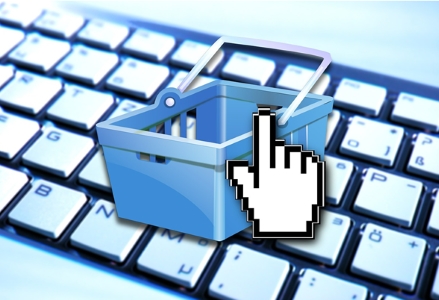Jewelry Industry and Retail News
We permanently get informed by our friends and partners from around the Web - about news, trends and/or best practice advice, loosely related to the jewelry retail business. Therefore, we present you here the most interesting or most useful of this information every month - from the following 3 top categories:
| Trends | Sales | Tech |
|---|---|---|
| Hot new/continued jewelry trends as presented to your customers from around the Web. See what they see when they scour the Web and think about your inventory. | Marketing news and related info that you could use in your daily operations. How to get your name out there, wherever you can and get people to know about your business. |
Tools and Trends (mostly tech related) that can make your business life easier. These are tools or trends that can help your business grow, get more organized, save more money, and/or streamline operations. |
Hopefully, you will get some tips/suggestions for your own business activities from this!
May 2018
5 Technologies Transforming Retail in 2018 - 4/5

From artificial intelligence to blockchain, five important innovations can help fashion businesses make their processes more efficient, enhance user experience and offer an improved overall customer value proposition.
2017 was the worst year on record for brick-and-mortar retail. By December, more than 6,985 stores closed across the US, according to retail think-tank Fung Global Retail & Technology. That’s up more than 200 percent from a year ago, according to the firm’s findings. It also beats the previous all-time high of 6,163 store closings that took place during the 2008 financial crisis, according to estimates by Credit Suisse.
The reality is that many stores are closing for the same reason they’ve always closed — they simply don’t meet the needs and demands of customers. But at a time when consumers are empowered with choice and market conditions are increasingly volatile, new technologies can help brands and retailers drive valuable business efficiencies, and improve the overall customer experience and value proposition.
“The biggest upside to technology in fashion will be the ability to offer consistency, and being able to personalize the customer’s shopping patterns,” said Robert Burke, chief executive of retail consultancy firm Robert Burke Associates. Indeed, fashion companies that effectively deploy the right technologies will be able to enhance their competitive advantage by personalizing products and shopping experiences, and refining logistical processes that nibble away at budgets.
However, fashion has been slow to harness many of these opportunities. “We’re only scratching the surface right now of technologies like virtual reality or artificial intelligence,” said Doug Stephens, a retail industry futurist and author of “Reengineering Retail: The Future of Selling in a Post-Digital World.” “But directionally, we can already envision a point where the margin of error for consumer shopping for clothing — both online and offline — will be almost nil.”
Here in this short series, we spotlight the five important technology innovations that can help brands and retailers boost their businesses.
4/5 Contactless Shopping
High-tech automated convenience stores are infiltrating Beijing and Shanghai. Powered by WeChat, a Chinese mobile messaging service, these unmanned stores require no checkout, no cash and no salespeople. Customers scan QR codes to enter the store and select products, and then pay using their mobile WeChat wallets. Sensors on the shelves detect the removal of items. Once an item has been removed, it is linked to the shopper’s unique ID in the Smartphone app to prevent theft.
Outside of China, Zara has introduced self-checkout stations at a new 65,000-square-foot store in Madrid, its largest store in the world, which opened in April last year. Meanwhile, Rebecca Minkoff’s flagship store in New York lets customers buy anything from $200 handbags to $1,500 jackets on their own, without dealing with a sales associate. Amazon is also trialing an Amazon Go store where there are no checkouts, and Walmart plans to launch a contactless shopping store in Long Island by the end of 2018.
Contactless shopping helps to make the checkout process more seamless, efficient and convenient by eliminating hassles like long checkout lines or inconvenient hours. Still, half of all retailers still do not accept contactless payments, even though “touch-and-go” spending is expected to increase by more than 300 percent over the next four years, according to British bank Barclays. Analysts at Technavio, a market research firm, however, predict that the global retail self-checkout market will grow steadily over the next four years, posting a CAGR of almost 18 percent by 2021.
“In the retail industry, the act of paying is often treated as something that is detached from the experience. You have a great shopping experience and when it’s over, it’s ‘time to pay.’ But the act of checking out of a store is part of the experience,” said Stephens. Many retailers already have the capability to eliminate checkouts, but whether they choose to do so or not is “a branding decision,” he said. “How you choose to approach that depends on the brand story you’re telling, the positioning of your brand, and ultimately, the experience that you’re trying to craft and curate.”
“In 2018, there will be two types of stores: one for convenience where shoppers will go there, to get something. The second one has a lot to do with experience. For a retailer like Primark, convenience is always more important. A luxury brand like Burberry might focus on the experience,” agreed Seara. “In the end, brands might even have two models. If you’re a big retailer with multiple locations, you might have a flagship on London’s Bond Street with all the experiences, as well as a click-and-collect place elsewhere that is convenient.”






